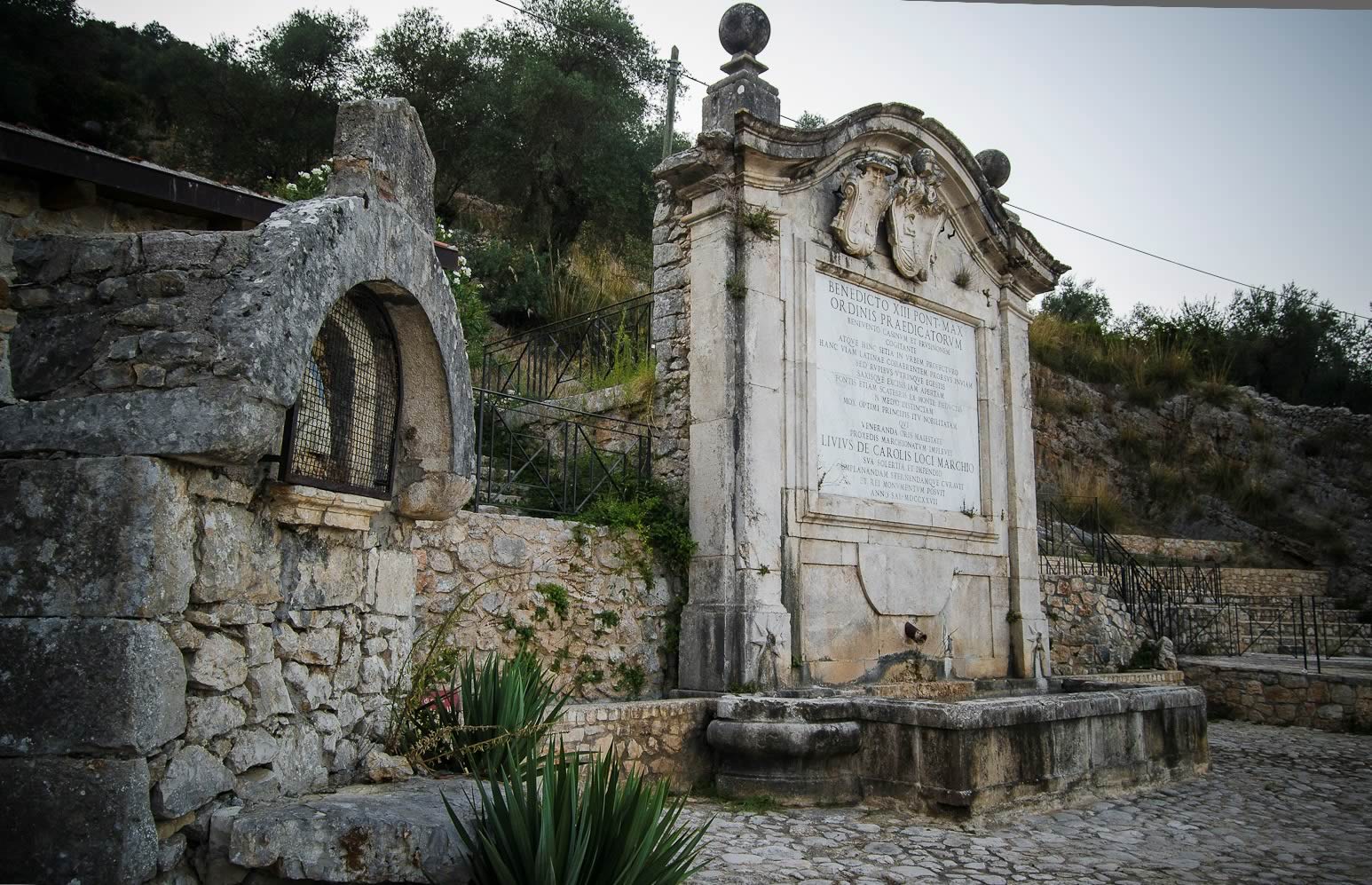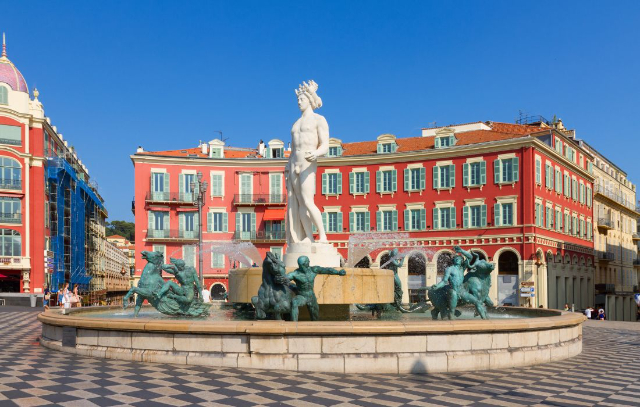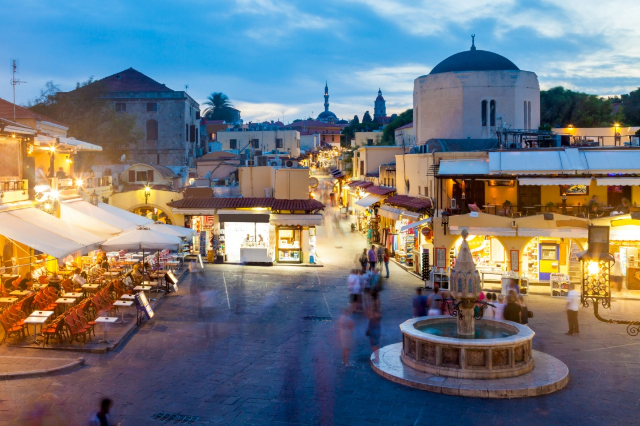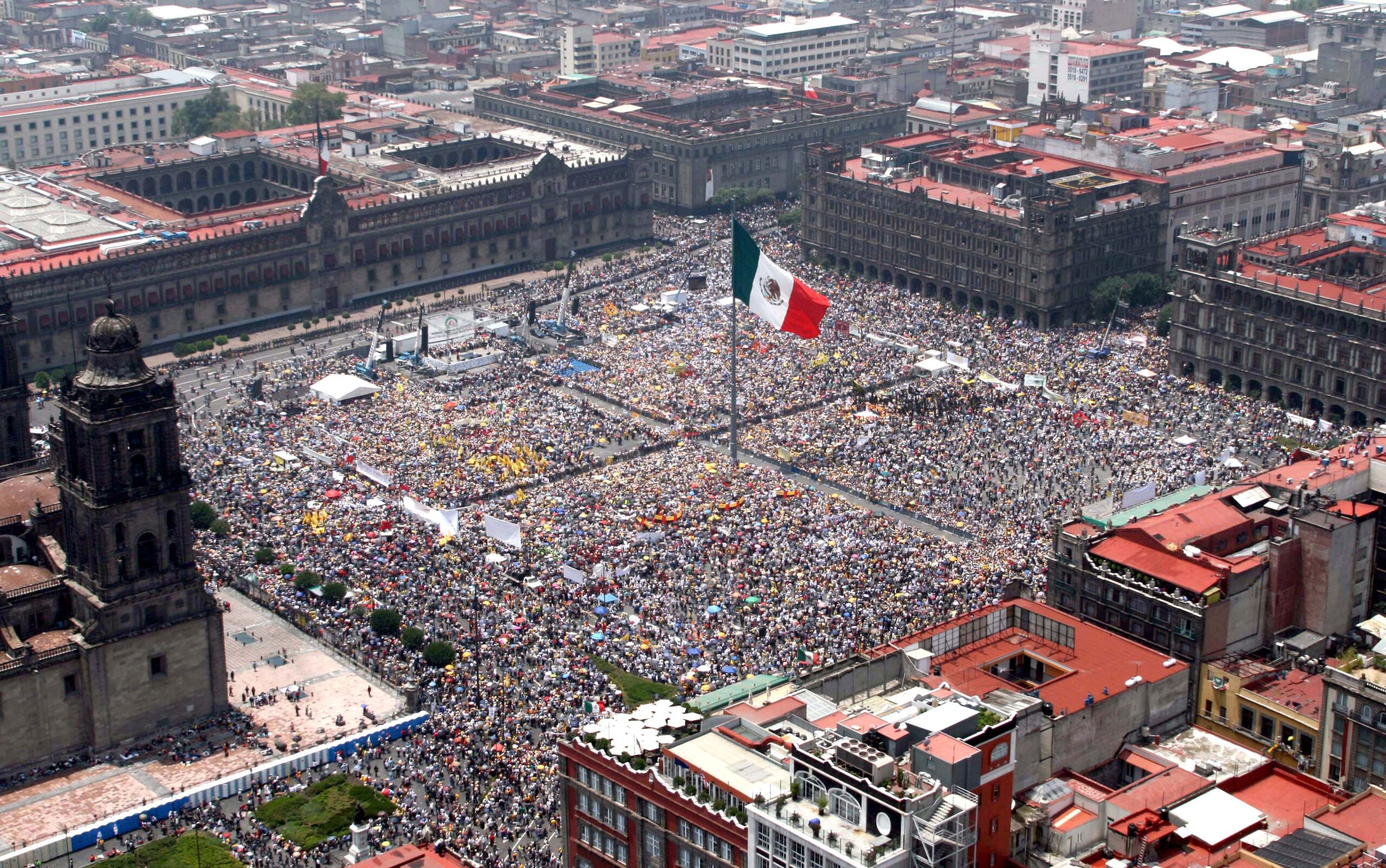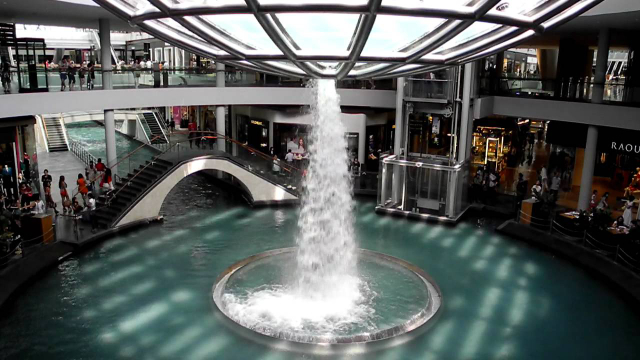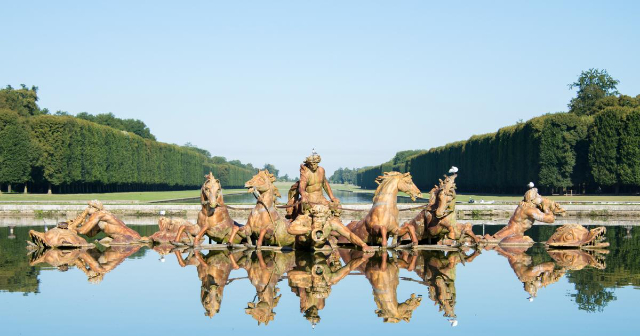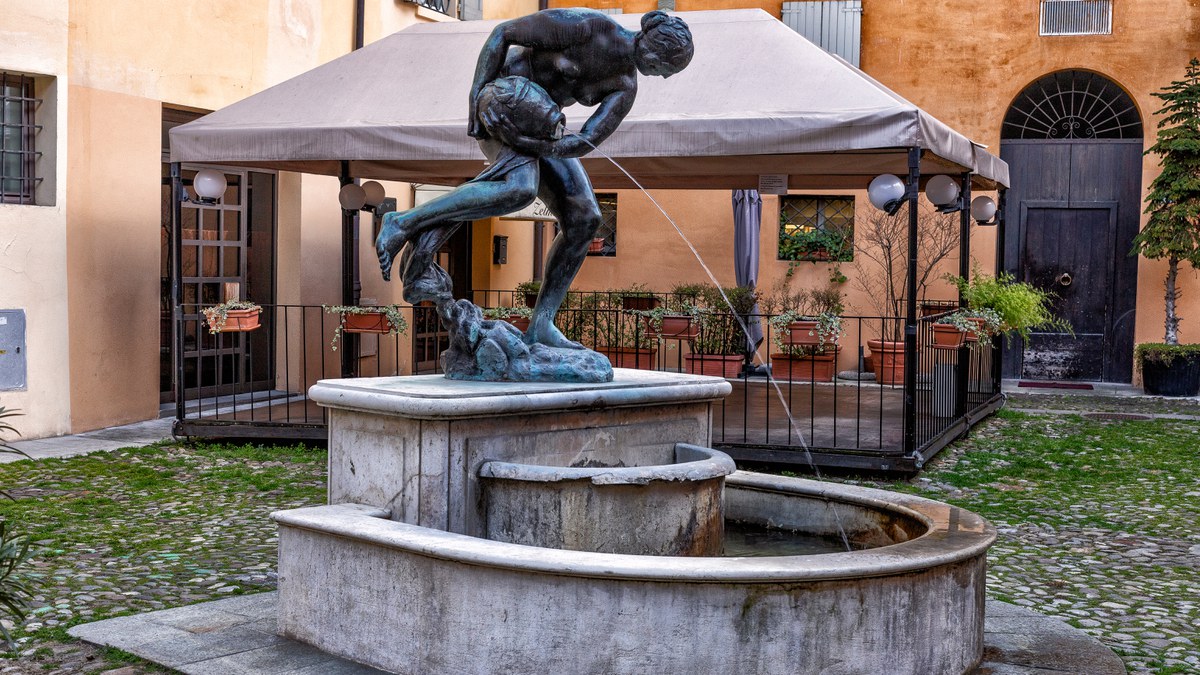In a site not far from the entrance of the town, along the old Maritime road is the monumental Fontana dei Papi. It was built in 1727 by the marquis Livio De Carolis.
Originally from Pofi, he was lord of Prossedi for only twenty years. Coming from a family of merchants, he had a great fortune when he obtained the exclusive contract of the tax on the millstone in the provinces of Marittima and Campagna. The large amount of money he had available allowed him to buy numerous lands in Ciociaria and above all to ingratiate himself with the clergy. It was Pope Benedict XIII who appointed him "Roman Patrician and Marquis of Prossedi". In 1711, he had a monumental fountain built in Frosinone, near the sanctuary of the Madonna della Neve. The marble fountain of the Popes of Prossedi recalls the visit of Pope Benedict XIII. The chronicles of the time remember that at 9:00 a.m. on May 23, 1727 the group of 92 carriages accompanying the pope left Frosinone along a road that was rough and impervious at the beginning. The journey was not easy, but once arrived at the borders of Prossedi, the road had been made easier and practicable by the Marquis de Carolis. The group of the pontiff’s companions stopped in the village and listened to the Mass in the church of Sant’Agata, where the pontiff blessed the population that came from the neighbouring villages. Marquis Livio De Carolis had carried out substantial works to make the stretch of road between Frosinone and Priverno easily carriageable and at their inauguration Benedict XIII himself was present and he passed in front of the monumental fountain erected to commemorate the event. The splendid fountain consists of a large basin leaning against a marble backdrop that houses the inscription flanked by two pilasters. The top fastigium bends and rises in the middle to frame the three coats of arms: in the middle the papal coat of arms of Benedict XIII, on the left the episcopal coat of arms of M.P. de Carolis and on the right the coat of arms of Marquis L. de Carolis. The latter is unfortunately no longer in place, having been lost since the middle of the eighteenth century, most likely removed by the successive lords of Prossedi. The rectangular basin, used by the women of Prossedi to wash their clothes and by the herdsmen as a drinking trough, was later joined by two smaller basins. The two side pilasters culminate to support two marble spheres that balance the architectural composition. The large epigraph is perfectly aligned and is framed by a complex moulding, from the base of which the main water supply pipe to the larger basin emerges.
